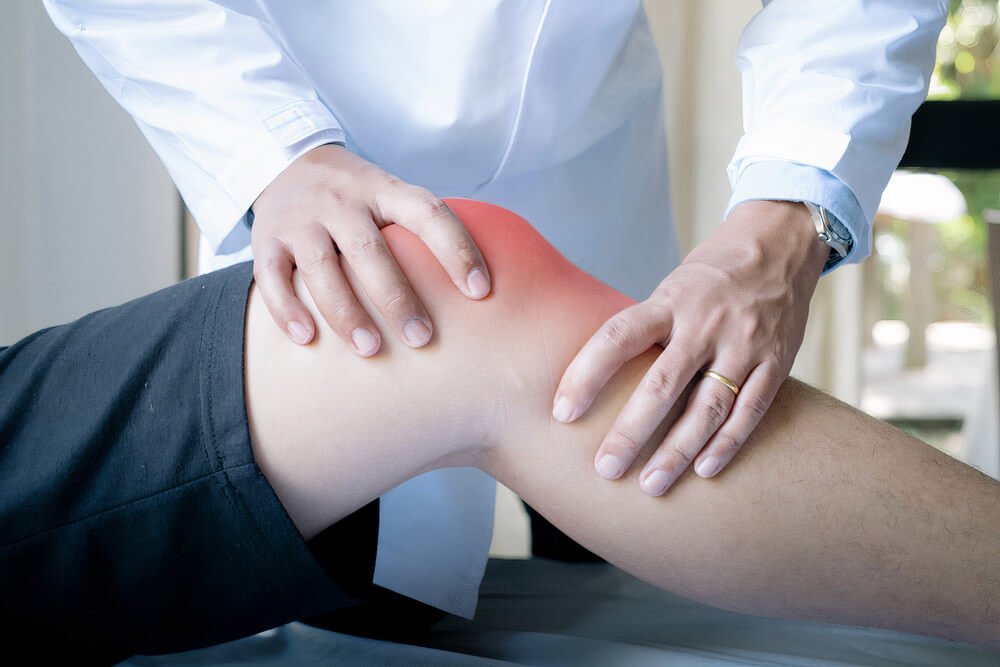Diagnosing knee pain

As you can see, there are many different manifestations that may be associated with knee pain, and depending on the combination of signs and symptoms you have, you will get a diagnosis. Moreover, your diagnosis will be further confirmed by a series of tests depending on each particular case to know whether or not this is the real cause of pain.
Basically, doctors would need to take a look at the signs and symptoms and evaluate if the patient has a primarily inflammatory disease or if knee pain is associated with a traumatic event. In cases of inflammatory pain, skin rash, exposure to certain environments, deformation of the articulations, and careful analyses is essential for the diagnosis.
It is essential to evaluate whether the patient has acute or chronic knee pain and whether it is continuous or appears in episodic flare-ups. In cases of flare-ups, the duration and intensity of the symptoms are important, and it is essential to evaluate other symptoms in the articulation and far from the articulation when knee pain is becoming more severe.
After this evaluation, doctors might order a few diagnostic tests and imaging studies:
• X-rays: They are commonly prescribed in patients who are suspicious of fractures or bone dislocations.
• Magnetic resonance imaging: This diagnostic imaging study is particularly important to evaluate soft tissues of the knee, including the tendons and menisci, and it is used alongside with X-rays because it often fails to provide a clear picture of fractures.
• Synovial fluid analysis: It is important when your doctor has a high suspicion of infectious or inflammatory causes or if your doctor wants to see whether or not there are crystals in the articulation.
• Arthroscopy: In some cases, your doctor might recommend arthroscopy, a surgical procedure with small cameras to see inside the joint. While performing this procedure, your doctor may be able to diagnose and repair the problem in some cases.
• Blood tests: If your doctor suspects arthritis, he will probably order tests such as rheumatoid factor, anti-cyclic citrullinated peptide, Antinuclear antibodies, and other blood tests associated with inflammation such as C-reactive protein and erythrocyte sedimentation rate. Each one of them will provide data about what is causing knee pain and will be useful for the diagnosis of arthritis.
We have already covered the most relevant signs and symptoms and how each one usually points out to a particular disease. But another thing a doctor needs to consider before diagnosing knee pain is where the pain is located. This is particularly important when knee pain is associated with overuse of the articulation and traumatic causes.
There are different diagnoses depending on the location of knee pain:
• Anterior knee pain: In cases of knee pain in the patella or the surrounding area, it is important to rule out a jumper’s knee and patellofemoral pain syndrome (runner’s knee). Runner’s knee is an overuse injury that affects your kneecap while jumper’s knee is a problem in the tendon that is located below your kneecap.
• Posterior knee pain: In cases of posterior knee pain, it is important to rule out hamstring tendonitis as one of the most common overuse injuries affecting the posterior portion of your knee. Baker’s cyst is another possibility when there’s a swollen bulge in the area.
• Lateral knee pain: In cases of knee pain located on either side of the knees, we should differentiate between the outer side and the inner side of the knee. In cases o knee pain in the outer side of the knee, doctors might consider a diagnosis of iliotibial band syndrome, especially in cyclists or distance runners. An injury to the lateral collateral ligament is also a possibility, and it usually results from a sudden and violent twisting motion or a sudden impact to the inside of the knee.
• Medial knee pain: In cases of knee pain located in the inner side of the knee, one of the most common causes is a sprain or tear of the medial collateral ligament. This is typically caused by a sudden impact to the outer side of the knee, and it is often associated with instability and swelling. Other diagnostic possibilities your doctor might need to rule out are irritation of medial plica and pes anserine bursitis.
